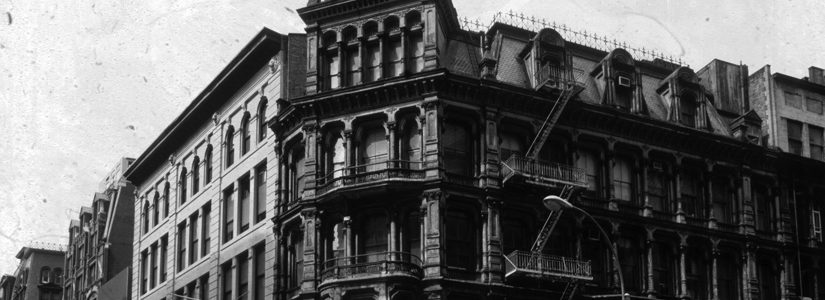
In Memoriam: Truman Moore
May 14, 2009
Spring 2009 Newsletter
The death on October 4, 2008, of Truman Moore at age 73 leaves a void among photographers who document the architectural heritage of New York City. Truman’s studio was in one of the glorious buildings that, since 1989, has been part of Manhattan’s Ladies’ Mile Historic District – an area in which he and his wife, Margaret (Peg) Moore, played pivotal roles in persuading the New York City Landmarks Preservation Commission to designate it, after a six-year campaign of researching, photographing, educating, and lobbying.
Part of that effort, spearheaded by the still-active organization called The Drive to Protect the Ladies’ Mile District, included the production and sale of the book “End of the Road for Ladies’ Mile?” with Truman’s incisive photographs of the area’s architecturally stunning Palaces of Commerce, many of them then at risk of demolition or insensitive alteration. They were silent and endangered symbols of the great shopping area of the Gilded Age between the Civil War and World War I, now again a thriving commercial and increasingly residential part of the city.
Truman, a successful commercial photographer, was an architecture and history buff who donated his camera and an enormous part of his time and talent to the cause of historic preservation. Almost all of the Ladies’ Mile’s 400 buildings, in 28 blocks of what is now called Midtown South, were documented by Truman’s loving lenses. His images inspired a generation of landmarking advocates and activists. Truman, a Southerner by birth, and Peg, moved to Charleston, South Carolina, in 1994, where Truman’s photography and Peg’s preservation advocacy worked their magic again to help save and expand that city’s architectural heritage. They left behind in New York the Ladies’ Mile Historic District, which celebrates its 20th anniversary in May of this year.